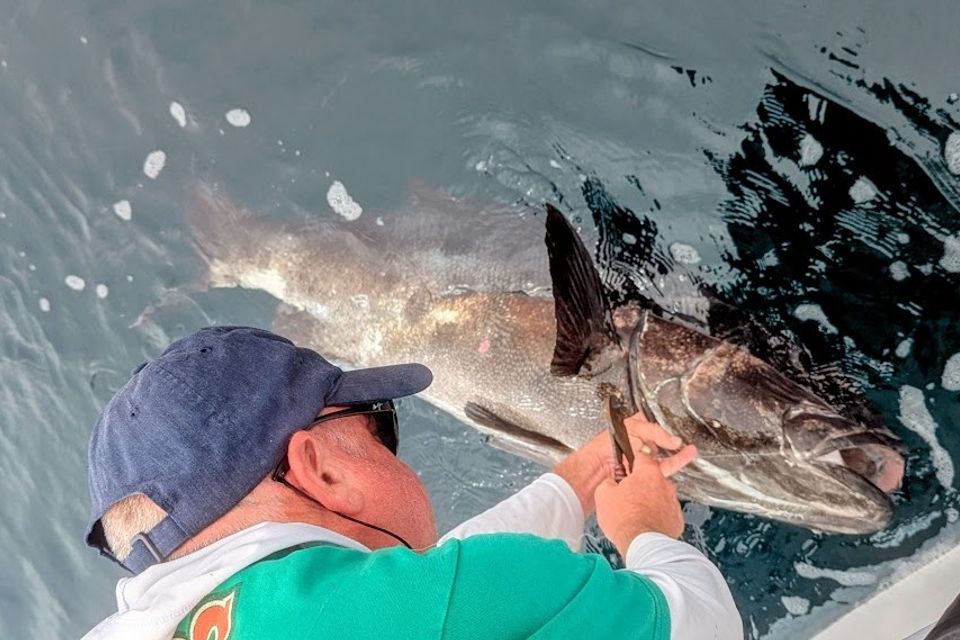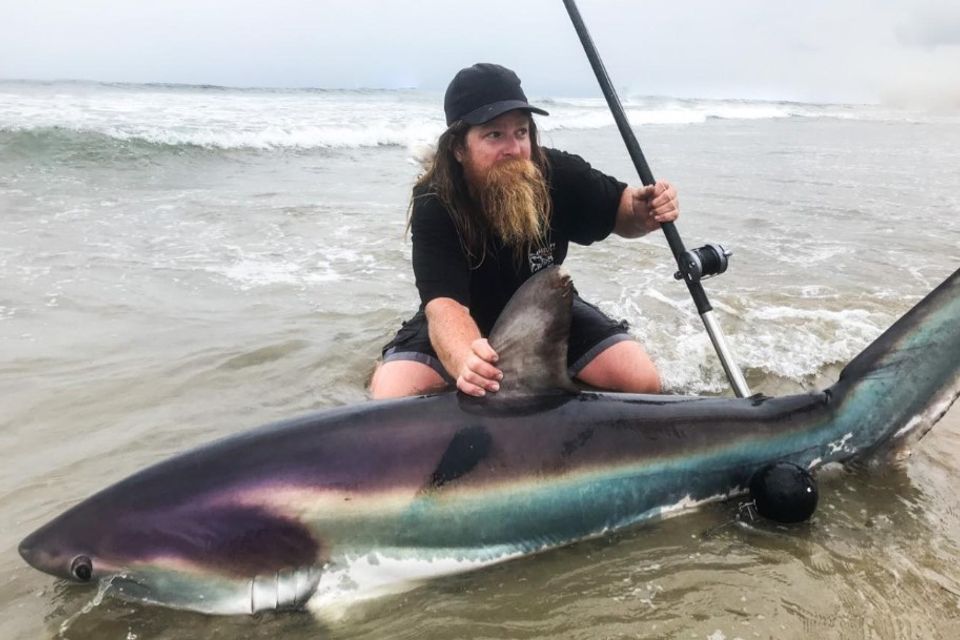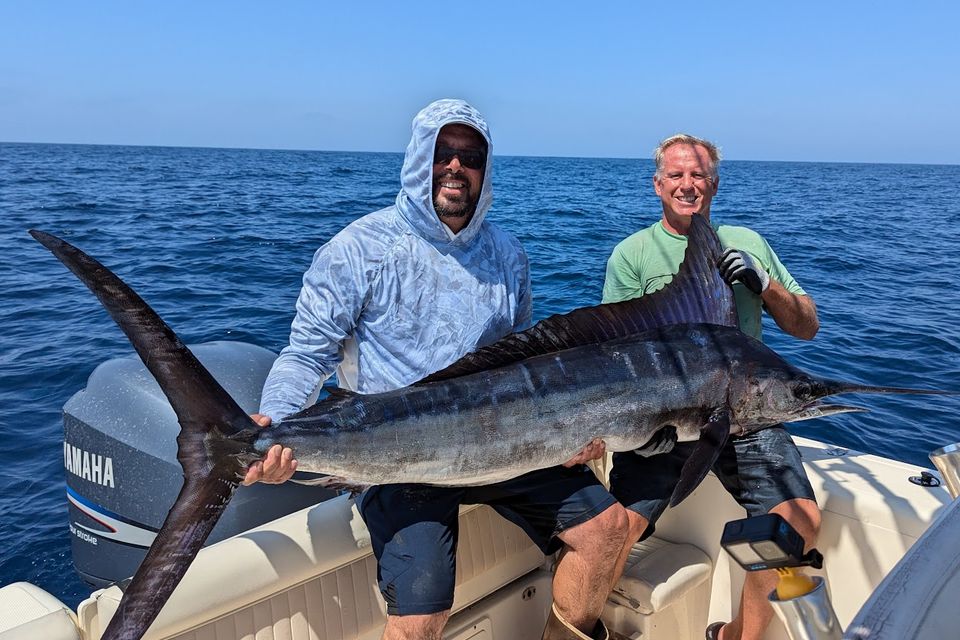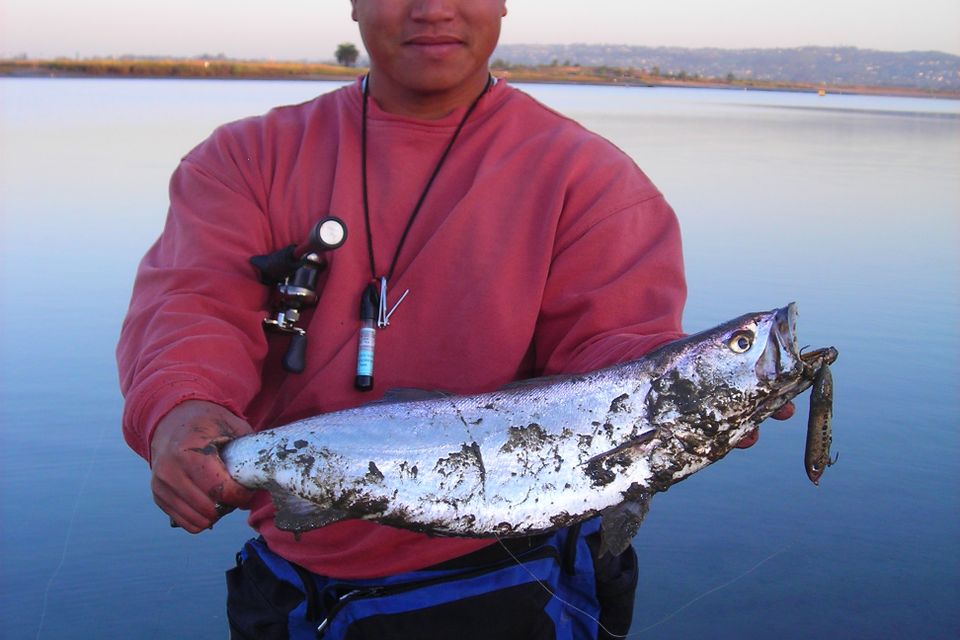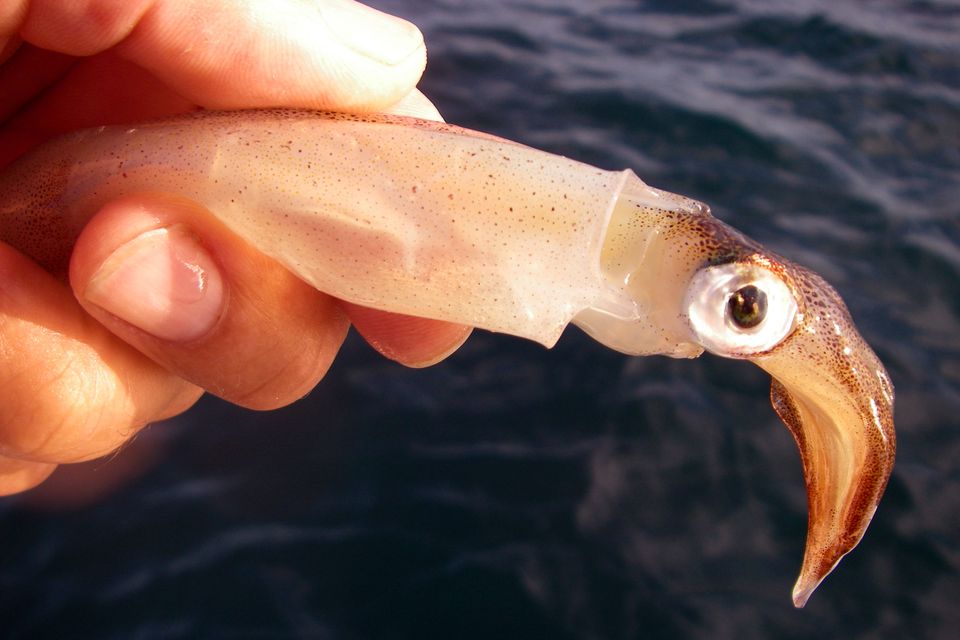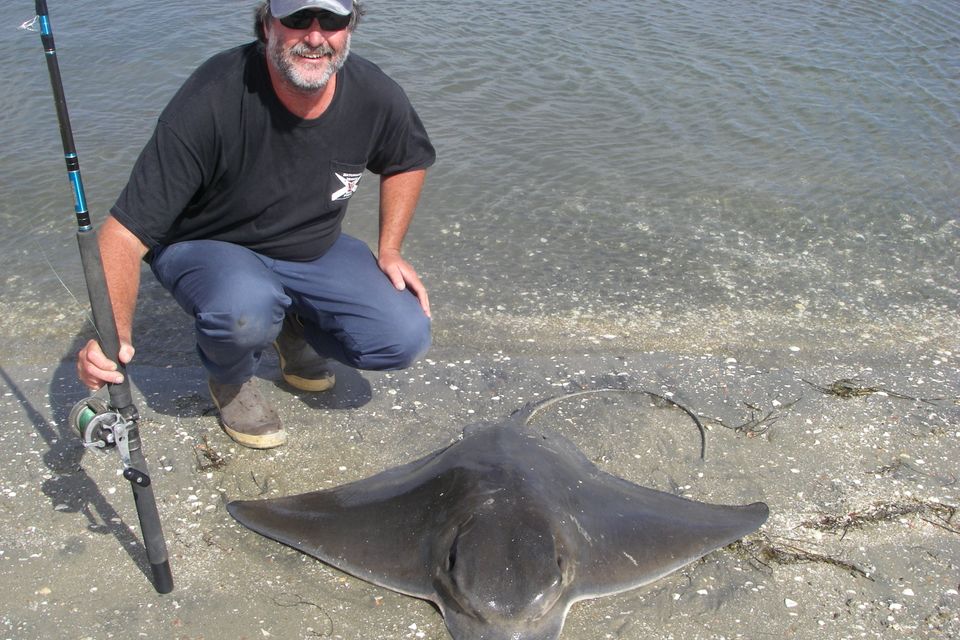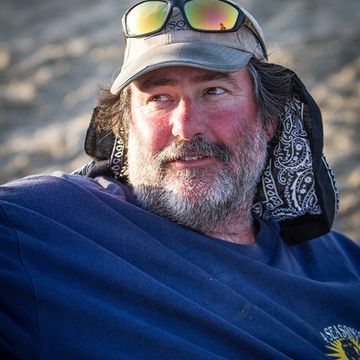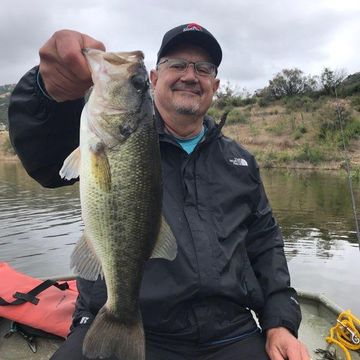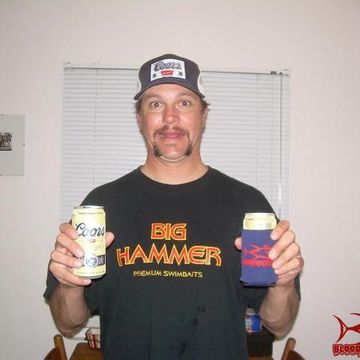The California Yellowtail (Seriola dorsalis/lalanis): A Deep Dive into Biology, Ecology, and Economic Importance
Introduction: The Golden Predator of California's Blue Waters
The California yellowtail (Seriola dorsalis), also known as the yellowtail amberjack or “hamachi” in sushi parlance, is an iconic fish of the Pacific. Sleek, swift, and sporting a signature golden stripe, the yellowtail commands attention both beneath the waves and at markets, sushi bars, and sportfishing docks. Its reputation is built not just on its fighting spirit and culinary value, but also on its role as a pivotal predator and a valuable resource for coastal communities. This comprehensive exploration uncovers the biology, ecology, and economic significance of the California yellowtail, drawing from the latest scientific studies, fisheries reports, and community perspectives to reveal why this species holds such enduring fascination and importance.
Taxonomy and Physical Characteristics
Taxonomic Placement
The California yellowtail is taxonomically classified as Seriola dorsalis, belonging to the family Carangidae, which includes jacks and pompanos. Despite some historical taxonomic confusion with the southern stock, modern consensus—supported by genetic research—places the California yellowtail firmly with S. dorsalis, which ranges globally across subtropical and temperate waters. The species is one of several “yellowtail” types found worldwide, with the California yellowtail specifically recognized for its distribution and morphological features distinct to the Eastern Pacific.
Defining Features
Adult yellowtail are instantly recognizable: their elongated, muscular bodies can reach up to 2.5 meters in length, although most California specimens encountered are in the 60–120 cm range. Typically weighing between 5 and 20 kilograms (but rarely recorded at over 40 kg), these fish sport a metallic blue-green to olive back, silvery sides, and a brilliant yellow tailfin and midline stripe that runs from eye to caudal peduncle—features that inspired both their common and scientific names. Their dorsal and anal fins are sharp and sickle-shaped, further streamlined by small, stiff scutes at the tail base which aid in fast, agile swimming.
Yellowtail have a large mouth equipped with small but sharp teeth, reflecting their predatory lifestyle. Their lateral line is conspicuously arched, and the overall body form optimizes them for powerful bursts of speed, both in hunting and evading their own predators.
The physical characteristics highlighted underscore the adaptations that make the California yellowtail a formidable midwater hunter and a prized target for anglers. Its distinctive coloration and robust musculature are direct reflections of its ecological role as both predator and prey in dynamic marine systems. Furthermore, the lack of pronounced sexual dimorphism suggests that both sexes share similar ecological niches and behaviors, a trait common to many pelagic fish.
Life Cycle and Growth Stages
Egg, Larval, Juvenile, and Adult Phases
The life cycle of the California yellowtail unfolds through distinct stages, each tailored to maximizing survival in a highly variable oceanic environment. Spawning occurs mainly in late spring through summer, when adults release pelagic eggs into offshore waters. Fertilized eggs drift with currents, hatching in about two to three days depending on water temperature.
Larval yellowtail are planktonic, transparent, and exceptionally vulnerable to predation and environmental conditions. Their growth is rapid—an adaptation critical for survival, as size confers both greater mobility and decreasing susceptibility to predators. As they metamorphose into juveniles, typically within a few weeks, they begin adopting the streamlined body and coloration of adults and migrate toward coastal nurseries: kelp forests, rocky reefs, floating debris, and even offshore oil platforms provide shelter and foraging opportunities for this stage.
Juvenile yellowtail display opportunistic feeding habits and exhibit high growth rates, often achieving lengths of 20–30 cm within their first year. Sexual maturity is generally reached at 2–3 years of age and at a length of around 75–80 cm. Adults migrate seasonally and may live upwards of 12–15 years, participating in multiple spawning cycles if they evade predators and fishing gear.
This swift and energetic life history enables the yellowtail to capitalize on fleeting environmental opportunities while also coping with natural and anthropogenic pressures. Their adaptability in growth and maturation is central to both natural population resilience and the challenges of sustainable fisheries management.
Habitat and Geographic Distribution
Preferred Habitats
The California yellowtail exhibits a preference for warm-temperate to subtropical waters, particularly in areas typified by high productivity and structural complexity. They are most commonly associated with near-shore rocky reefs, kelp beds, and offshore islands, but are also encountered around floating debris and man-made structures such as oil rigs. These habitats provide both cover and access to abundant prey.
Juveniles tend to inhabit inshore areas for safety among drifting kelp or shallow reefs before gradually moving offshore as they mature. Adults are typically encountered in deeper but still coastal waters, although they can range into the open ocean during migrations or when following prey aggregations.
Global and Regional Range
The distribution of California yellowtail spans a vast area of the Pacific Ocean. In the Eastern Pacific, their range extends from Baja California in Mexico northward to Southern California, sometimes reaching as far north as Monterey Bay in warmer years. Their presence in the Channel Islands, Catalina, and San Clemente Islands is especially pronounced, making these locations premier yellowtail habitats and hotspots for recreational fishing.
Globally, Seriola lalandi is found in the Southwest Pacific (coasts of Australia and New Zealand), South Atlantic (off southern Africa), and other temperate regions. However, the California subspecies is generally considered genetically and morphologically distinct, reflecting historical isolation and adaptation to local environmental conditions.
Their affinity for “edge environments”—zones where nutrient-rich upwellings and structure such as kelp forests or reefs intersect—makes them a key species in complex marine food webs and a reliable indicator of ecosystem health.
Feeding Behavior and Diet Composition
Predatory Tactics
California yellowtail are voracious, opportunistic hunters. They primarily feed on small pelagic fishes such as sardines, anchovies, mackerel, and squid, but will also consume crustaceans and cephalopods when available. Their hunting tactics combine speed and agility, allowing them to ambush schools of bait or pursue scattered prey through kelp beds and open water.
Feeding activity often peaks at dawn and dusk, with yellowtail forming loose aggregations to encircle and attack prey. This crepuscular feeding offers several advantages, including reduced visibility for predators and synchronized attacks on disoriented prey schools. Their sharp teeth and rapid acceleration are especially effective at corralling and stunning baitfish before ingestion.
Diet Variation and Resource Use
Stomach content analyses reveal seasonal and regional variation in yellowtail diet composition, reflecting shifts in prey abundance and distribution. In Southern California, anchovy and sardine schools in upwelling regions constitute major dietary components, while off Baja California, squid and small pelagic fish are more readily consumed during spawning periods.
Juvenile yellowtail display broader dietary plasticity, including benthic invertebrates and zooplankton until reaching sizes suitable for piscivory. This trophic flexibility underpins their success in fluctuating environments and contributes to their resilience in the face of changing oceanographic conditions.
Migration Patterns and Seasonal Movements
Patterns of Movement
California yellowtail are renowned for their migratory behavior, displaying extensive seasonal movements that synchronize with both biological and environmental cues. Typically, yellowtail populations migrate northward along the California coast in spring and summer as ocean temperatures rise, taking advantage of upwelling-driven productivity and the abundance of prey.
As waters cool in late autumn and winter, yellowtail retreat southward, often overwintering in the warmer waters off the Baja Peninsula or near offshore islands. These migrations are not only predictable but are also closely tracked by anglers, who time their fishing efforts to coincide with peak yellowtail abundance in coastal waters.
Triggers and Mechanisms
Water temperature is the principal environmental trigger for migration, with yellowtail typically favoring isotherms above 18 °C. Prey availability plays a secondary yet still important role, as they will follow schools of baitfish to maximize feeding efficiency. Lunar cycles, ocean currents, and evidence of spawning aggregations suggest a multifactorial set of drivers influencing their seasonal movements.
Scientific tagging studies have confirmed both local site fidelity (returning to productive reefs or islands) and longer-range migrations of hundreds of kilometers, especially among mature adults. The dynamic interplay of these cues not only shapes yellowtail ecology but also underpins patterns of exploitation by commercial and recreational fisheries. Understanding these migrations is crucial for effective management, as shifts in oceanographic regime (like El Niño events) can substantially alter availability and catch rates year to year.
Reproductive Biology and Strategies
Spawning Dynamics
California yellowtail employ broadcast spawning, in which females release thousands to millions of buoyant eggs directly into the water column for external fertilization by males. Spawning typically peaks between late spring and midsummer when sea temperatures and food availability are optimal for larval survival.
Spawning aggregations commonly occur in offshore environments such as seamounts or around the Channel Islands. Mass spawning strategies maximize genetic mixing but also expose eggs and larvae to high predation and variable survival rates.
Fecundity, Maturity, and Parental Investment
Females are highly fecund, with larger individuals producing exponentially more eggs. Males and females reach sexual maturity around 2–3 years of age, but reproductive output and participation in spawning events increase with size and age. There is no parental care provided once spawning occurs; all life stages post-fertilization are at the mercy of ocean conditions and predators.
Successful recruitment of new yellowtail cohorts is highly variable, subject to the influence of factors such as water temperature, prey abundance, and predation. This reproductive strategy, while risky, allows for rapid population rebounds given favorable years, but also makes stocks susceptible to overfishing and recruitment failure if adult stocks are depleted below sustainable thresholds.
Population Dynamics and Stock Assessments
Stock Dynamics
Understanding the population biology of the California yellowtail is central to sustainable management. The species exhibits a relatively high capacity for population growth under ideal environmental conditions but is also prone to significant interannual fluctuations in recruitment driven by oceanographic variability (e.g., El Niño or La Niña events) and fishing pressure.
Stock assessments utilize tools such as catch records, fishery-independent surveys, and age-structured models to estimate biomass, fishing mortality, and spawning stock abundance. These studies have generally indicated that California’s yellowtail stocks are healthy, though local depletions and short-term declines occur in areas of intense fishing or during poor recruitment years.
High resilience and rapid maturation enable yellowtail populations to bounce back from short-term overfishing or environmental bottlenecks, provided that spawning biomass is not continuously depressed. However, the lack of fine-scale stock delineation and challenges in tracking highly migratory individuals complicate precise population assessments. This inherent uncertainty necessitates conservative management strategies and robust monitoring networks.
Ecological Role and Predators
Keystone Predator
The ecological significance of the California yellowtail extends well beyond its immediate prey species. As a top midwater predator, it plays a role in regulating populations of small pelagic fish and in nourishing a multitude of larger oceanic predators, thus acting as a critical trophic link in coastal-marine food webs.
Yellowtail predation shapes community structure among baitfish, indirectly impacting plankton dynamics and nutrient cycling in nearshore environments. Their predatory pressure helps maintain the balance between forage species and primary production, contributing to the resilience of kelp forest and open-water ecosystems.
Predators and Ecological Interactions
Despite their formidable abilities, California yellowtail are prey to a suite of apex predators, particularly during their juvenile and subadult stages. Larger sharks (such as great whites and makos), marine mammals (including sea lions and dolphins), and even seabirds target yellowtail, making them an important food source in the broader Pacific ecosystem. Their presence in offshore and inshore food webs underscores their dual role as both predator and prey, essential for the flow of energy and nutrients throughout the region.
Commercial Fisheries and Catch Methods
Historic and Contemporary Commercial Significance
Commercial exploitation of California yellowtail has waxed and waned with changes in demand, regulatory regimes, and competitive pressures from other fisheries. Since the early 20th century, yellowtail has been valued for its culinary qualities, especially in California, Japan, and Baja California markets. In recent decades, the globalized sushi trade—where yellowtail is prized as “hamachi” or “buri”—has boosted international demand, although most California catches feed domestic markets.
Annual commercial landings in California range from several hundred to several thousand metric tons, with significant variability linked to stock migration, environmental conditions, and market cycles. Commercial fishing operations primarily employ purse seines, hook-and-line, and drift gillnets. Purse seining dominates in areas with large aggregated schools, while hook-and-line fishing allows for selective targeting and better bycatch avoidance.
Bycatch is relatively low in the yellowtail fishery compared to many other pelagic fisheries, but interactions with other managed species—especially white seabass and Pacific mackerel—necessitate ongoing monitoring and regulatory oversight.
Primary Markets
Commercially caught yellowtail is marketed fresh, frozen, and as fillets. High-grade “sashimi” yellowtail commands premium prices, while lower grades are destined for local restaurants, fish markets, and processing plants. The reliability of supply from California waters supports robust supply chains but is also vulnerable to short-term environmental and economic shocks.
Recreational Fisheries and Angling Techniques
Sportfishing Icon
For recreational anglers, the California yellowtail is a “bucket list” species, celebrated for its power, speed, and relentless fighting qualities. The recreational fishery is especially concentrated along the Southern California coast, Channel Islands, and Baja Peninsula, where favorable currents and habitats guarantee thrilling yellowtail action during the spring and summer months.
Anglers pursue yellowtail using a diverse array of techniques: live bait (sardines, mackerel), jigs (“iron” lures), surface poppers, trolling, and fly fishing are all effective under the right circumstances. Success often hinges on detecting migratory schools, reading oceanographic cues (temperature breaks, upwellings), and matching the “bite” windows which can be narrow and fleeting.
Equipment and Tactics
Sportfishing for yellowtail involves medium to heavy tackle, with fast-action rods and high-capacity reels essential for managing long, spirited runs. Leader strength and drag settings are adjusted to account for the fish’s tendency to “rock” or escape into kelp forests or reef structure—often resulting in dramatic, breakoff-laced battles.
The popularity of yellowtail angling has spurred a vibrant charter and guide industry, significant tourism revenues, and a passionate culture of sportfishing clubs and tournaments. Catch-and-release rates are moderate, but many fish caught are retained for personal consumption or local sale.
Fisheries Management and Regulatory Framework
Management Agencies and Measures
Sustainability of California yellowtail fisheries is overseen by multiple management bodies, including the California Department of Fish and Wildlife (CDFW), NOAA Fisheries, regional fishery management councils, and, for cross-border stocks, Mexican and international agencies (e.g., the Inter-American Tropical Tuna Commission).
Key regulatory tools include:
• Permitting and licensing for commercial and recreational fisheries
• Daily bag and size limits for recreational anglers (commonly 10 fish/day, with minimum size restrictions)
• Seasonal and area closures during periods of low stock abundance or spawning
• Gear restrictions on commercial vessels (e.g., limiting gillnet use, mesh sizes, and bycatch mitigation devices)
• Reporting and monitoring requirements for catch, bycatch, and discards
• Adaptive management responsive to stock assessments and environmental indicators
Enforcement is carried out via a combination of dockside inspections, at-sea patrols, observer programs, and penalties for violations. Updated regulatory frameworks have increasingly incorporated precautionary principles and real-time data collection, reflecting lessons from past over-exploitation in other fisheries.
Cooperative Approaches
Given the migratory nature of yellowtail, effective management depends on cooperation among neighboring jurisdictions and integration of research from both sides of the US–Mexico border. Data sharing, standardized assessment methods, and harmonized regulations are essential for ensuring that fishing pressure remains sustainable throughout the species’ range.
Recent studies and management reports indicate that yellowtail stocks are generally well-managed within California waters, yet advocate for continual improvements in data collection and public engagement to address emerging challenges such as climate change and illegal, unreported, and unregulated (IUU) fishing.
Sustainability Concerns and Conservation Status
Current Conservation Status
According to most recent stock status reports, the California yellowtail is classified as a species of “least concern” from a conservation perspective, reflecting robust population levels, resilient life history traits, and active management. However, the precautionary approach prevails, as the species’ high demand in both fisheries and aquaculture can locally depress stocks, particularly in periods of high fishing pressure or poor recruitment.
Bycatch of non-target species, habitat degradation (notably to kelp forests), and the spread of aquaculture diseases to wild populations are all recognized risks. The need for ecosystem-based management is widely acknowledged, aiming to safeguard the broader ecological context in which yellowtail thrive.
Environmental Change and Emerging Threats
While current populations appear healthy, shifting ocean conditions—especially marine heatwaves, deoxygenation, and changes in upwelling patterns—pose genuine threats to reproductive success and prey availability. El Niño events have historically led to short-term migrations and catch declines, underscoring the interconnectedness of fisheries management and broader ocean health.
Sustainability initiatives increasingly focus on maintaining ecosystem integrity, reducing bycatch and habitat impacts, and developing “climate-smart” management strategies for yellowtail and associated fisheries.
Market Value and Economic Impact
The economic influence of the California yellowtail extends well beyond landings and dockside prices. Its combined commercial and recreational value supports jobs in fishing, processing, tourism, and hospitality, while its inclusion in globally popular cuisines drives demand for both wild-caught and farmed product.
Market Valuation
Yearly ex-vessel prices for yellowtail can range from $2 to $6 per pound depending on grade, provenance, and market fluctuations. Sashimi-quality specimens, especially those suited for sushi and Japanese export, command the highest premiums, actively incentivizing targeted fishing during specific seasons and for certain size classes.
The recreational fishery, while catch-and-keep oriented, arguably delivers even greater economic activity via boat sales and rentals, tackle and gear sales, charter operations, fuel, lodging, and the multiplier impact of fishing tourism. Estimates suggest that overall direct and indirect economic impacts may exceed $50–100 million annually in California when all value chain elements are included.
The figures illuminate the multifaceted nature of the yellowtail’s economic importance. Notably, the economic engine of the recreational fishery often outpaces the landed value from commercial operations, a pattern seen increasingly in U.S. coastal fisheries. Exports, especially when the product meets strict quality standards for sushi and sashimi, support international trade and stimulate investment in handling and processing infrastructure.
Aquaculture and Farming Practices
The Rise of Yellowtail Aquaculture
To meet burgeoning demand and hedge against wild stock volatility, yellowtail aquaculture (both in California and globally) has expanded rapidly over the past two decades. S. lalandi is considered well-suited to farming due to its rapid growth, robust nature, and consumer acceptance. Techniques include both net-pen (offshore) and tank (recirculating aquaculture systems) production.
Juveniles are typically raised from hatchery-spawned eggs, moved to sea cages or systems for grow-out, and harvested at marketable sizes (commonly 2–5 kg) within 14–18 months. Nutrition is a challenge; providing balanced feeds that maximize growth and minimize waste is the subject of ongoing research and innovation.
Risks and Sustainability
Yellowtail aquaculture faces familiar challenges of disease outbreaks (vibriosis, parasitic infections), waste management, feed sustainability, and genetic impacts if escapes occur. Leading U.S. and international producers increasingly adopt best management practices, biosecurity protocols, and certification schemes (e.g., Best Aquaculture Practices, ASC standards) to address these issues and reassure environmentally-conscious consumers.
Aquaculture is expected to play an ever-greater role in meeting market demand while buffering wild stocks from excessive harvest. Transparent oversight and ongoing research remain crucial in ensuring a sustainable future for farmed yellowtail.
Cultural and Social Significance
Icon of Angling, Cuisine, and Community
Beyond its scientific and economic profiles, the California yellowtail occupies a storied place in regional culture. Revered as one of the strongest and most prized gamefish, yellowtail spark annual pilgrimages to the Channel Islands and Baja for “yellowtail season,” with countless tales of epic battles—and lost fish—woven into California’s coastal lore.
As a food fish, yellowtail’s mild, buttery flesh is ubiquitous in sushi, poke, ceviche, and grilled preparations. It is featured in festivals, restaurant promotions, and even as a symbol of sustainable local seafood in marketing campaigns. In Japanese-American communities, its presence as “hamachi” on New Year’s tables holds particular meaning.
Social media and television have amplified the fish’s status, turning catches into shared experiences and fostering a new generation of conservation-minded anglers. Initiatives such as “catch and release,” citizen science tagging, and habitat restoration link the joy of fishing with stewardship and advocacy.
Health and Nutritional Profile
Nutritional Benefits
California yellowtail is widely regarded as a healthy seafood choice, rich in high-quality protein, omega-3 fatty acids (EPA & DHA), vitamins (including B12, niacin, and D), and essential minerals (selenium, phosphorus) while being relatively low in contaminants compared to some larger pelagic species.
A 100-gram serving of raw yellowtail typically provides:
• Calories: 146 kcal
• Protein: 23.1 g
• Fat: 5.2 g (much of it as beneficial polyunsaturated fats)
• Omega-3s: 300–600 mg
• Cholesterol: 55 mg
• Micronutrients: High in niacin, B12, selenium
This favorable nutritional profile underpins yellowtail’s growing popularity in health-conscious diets. Regular consumption may help lower cardiovascular risk factors and support brain health. However, as with all wild fish, care should be taken with consumption by vulnerable groups regarding mercury or other pollutants, although yellowtail typically rates favorably compared to larger tunas or mackerel.
Challenges and the Road Ahead
California yellowtail occupy a pivotal juncture of ecology, economy, and culture. Their resilience belies the complexity of challenges facing coastal marine species in a rapidly changing Pacific. Continued scientific research, adaptive management, and strong community engagement are necessary to ensure both abundant yellowtail and thriving human communities for generations to come.
Future threats—from climate change to growing aquaculture reliance—will test management frameworks and societal commitments to sustainability. Success will hinge on remaining vigilant, flexible, and science-driven, with the yellowtail as both a sentinel and beneficiary of healthy, resilient ocean ecosystems.
Conclusion: The Enduring Allure of the California Yellowtail
From shimmering offshore habitats to bustling fish markets and lively angler tales, the California yellowtail is a species that seamlessly bridges the worlds of wild ocean, commerce, and culture. Its story is as much about adaptive success in dynamic seas as it is about human innovation and stewardship in sustaining coastal lifeways.For scientists, fishers, culinary fans, and conservationists alike, the yellowtail’s future represents a test of how responsibly and creatively society can value and protect one of California’s most iconic marine treasures.The California Yellowtail (Seriola dorsalis/lalanis): A Deep Dive into Biology, Ecology, and Economic Importance
Introduction: The Golden Predator of California's Blue Waters
The California yellowtail (Seriola dorsalis), also known as the yellowtail amberjack or “hamachi” in sushi parlance, is an iconic fish of the Pacific. Sleek, swift, and sporting a signature golden stripe, the yellowtail commands attention both beneath the waves and at markets, sushi bars, and sportfishing docks. Its reputation is built not just on its fighting spirit and culinary value, but also on its role as a pivotal predator and a valuable resource for coastal communities. This comprehensive exploration uncovers the biology, ecology, and economic significance of the California yellowtail, drawing from the latest scientific studies, fisheries reports, and community perspectives to reveal why this species holds such enduring fascination and importance.
Taxonomy and Physical Characteristics
Taxonomic Placement
The California yellowtail is taxonomically classified as Seriola dorsalis, belonging to the family Carangidae, which includes jacks and pompanos. Despite some historical taxonomic confusion with the southern stock, modern consensus—supported by genetic research—places the California yellowtail firmly with S. dorsalis, which ranges globally across subtropical and temperate waters. The species is one of several “yellowtail” types found worldwide, with the California yellowtail specifically recognized for its distribution and morphological features distinct to the Eastern Pacific.
Defining Features
Adult yellowtail are instantly recognizable: their elongated, muscular bodies can reach up to 2.5 meters in length, although most California specimens encountered are in the 60–120 cm range. Typically weighing between 5 and 20 kilograms (but rarely recorded at over 40 kg), these fish sport a metallic blue-green to olive back, silvery sides, and a brilliant yellow tailfin and midline stripe that runs from eye to caudal peduncle—features that inspired both their common and scientific names. Their dorsal and anal fins are sharp and sickle-shaped, further streamlined by small, stiff scutes at the tail base which aid in fast, agile swimming.
Yellowtail have a large mouth equipped with small but sharp teeth, reflecting their predatory lifestyle. Their lateral line is conspicuously arched, and the overall body form optimizes them for powerful bursts of speed, both in hunting and evading their own predators.
The physical characteristics highlighted in the table underscore the adaptations that make the California yellowtail a formidable midwater hunter and a prized target for anglers. Its distinctive coloration and robust musculature are direct reflections of its ecological role as both predator and prey in dynamic marine systems. Furthermore, the lack of pronounced sexual dimorphism suggests that both sexes share similar ecological niches and behaviors, a trait common to many pelagic fish.
Life Cycle and Growth Stages
Egg, Larval, Juvenile, and Adult Phases
The life cycle of the California yellowtail unfolds through distinct stages, each tailored to maximizing survival in a highly variable oceanic environment. Spawning occurs mainly in late spring through summer, when adults release pelagic eggs into offshore waters. Fertilized eggs drift with currents, hatching in about two to three days depending on water temperature.
Larval yellowtail are planktonic, transparent, and exceptionally vulnerable to predation and environmental conditions. Their growth is rapid—an adaptation critical for survival, as size confers both greater mobility and decreasing susceptibility to predators. As they metamorphose into juveniles, typically within a few weeks, they begin adopting the streamlined body and coloration of adults and migrate toward coastal nurseries: kelp forests, rocky reefs, floating debris, and even offshore oil platforms provide shelter and foraging opportunities for this stage.
Juvenile yellowtail display opportunistic feeding habits and exhibit high growth rates, often achieving lengths of 20–30 cm within their first year. Sexual maturity is generally reached at 2–3 years of age and at a length of around 75–80 cm. Adults migrate seasonally and may live upwards of 12–15 years, participating in multiple spawning cycles if they evade predators and fishing gear.
This swift and energetic life history enables the yellowtail to capitalize on fleeting environmental opportunities while also coping with natural and anthropogenic pressures. Their adaptability in growth and maturation is central to both natural population resilience and the challenges of sustainable fisheries management.
Habitat and Geographic Distribution
Preferred Habitats
The California yellowtail exhibits a preference for warm-temperate to subtropical waters, particularly in areas typified by high productivity and structural complexity. They are most commonly associated with near-shore rocky reefs, kelp beds, and offshore islands, but are also encountered around floating debris and man-made structures such as oil rigs. These habitats provide both cover and access to abundant prey.
Juveniles tend to inhabit inshore areas for safety among drifting kelp or shallow reefs before gradually moving offshore as they mature. Adults are typically encountered in deeper but still coastal waters, although they can range into the open ocean during migrations or when following prey aggregations.
Global and Regional Range
The distribution of California yellowtail spans a vast area of the Pacific Ocean. In the Eastern Pacific, their range extends from Baja California in Mexico northward to Southern California, sometimes reaching as far north as Monterey Bay in warmer years. Their presence in the Channel Islands, Catalina, and San Clemente Islands is especially pronounced, making these locations premier yellowtail habitats and hotspots for recreational fishing.
Globally, Seriola lalandi is found in the Southwest Pacific (coasts of Australia and New Zealand), South Atlantic (off southern Africa), and other temperate regions. However, the California subspecies is generally considered genetically and morphologically distinct, reflecting historical isolation and adaptation to local environmental conditions.
Their affinity for “edge environments”—zones where nutrient-rich upwellings and structure such as kelp forests or reefs intersect—makes them a key species in complex marine food webs and a reliable indicator of ecosystem health.
Feeding Behavior and Diet Composition
Predatory Tactics
California yellowtail are voracious, opportunistic hunters. They primarily feed on small pelagic fishes such as sardines, anchovies, mackerel, and squid, but will also consume crustaceans and cephalopods when available. Their hunting tactics combine speed and agility, allowing them to ambush schools of bait or pursue scattered prey through kelp beds and open water.
Feeding activity often peaks at dawn and dusk, with yellowtail forming loose aggregations to encircle and attack prey. This crepuscular feeding offers several advantages, including reduced visibility for predators and synchronized attacks on disoriented prey schools. Their sharp teeth and rapid acceleration are especially effective at corralling and stunning baitfish before ingestion.
Diet Variation and Resource Use
Stomach content analyses reveal seasonal and regional variation in yellowtail diet composition, reflecting shifts in prey abundance and distribution. In Southern California, anchovy and sardine schools in upwelling regions constitute major dietary components, while off Baja California, squid and small pelagic fish are more readily consumed during spawning periods.
Juvenile yellowtail display broader dietary plasticity, including benthic invertebrates and zooplankton until reaching sizes suitable for piscivory. This trophic flexibility underpins their success in fluctuating environments and contributes to their resilience in the face of changing oceanographic conditions.
Migration Patterns and Seasonal Movements
Patterns of Movement
California yellowtail are renowned for their migratory behavior, displaying extensive seasonal movements that synchronize with both biological and environmental cues. Typically, yellowtail populations migrate northward along the California coast in spring and summer as ocean temperatures rise, taking advantage of upwelling-driven productivity and the abundance of prey.
As waters cool in late autumn and winter, yellowtail retreat southward, often overwintering in the warmer waters off the Baja Peninsula or near offshore islands. These migrations are not only predictable but are also closely tracked by anglers, who time their fishing efforts to coincide with peak yellowtail abundance in coastal waters.
Triggers and Mechanisms
Water temperature is the principal environmental trigger for migration, with yellowtail typically favoring isotherms above 18 °C. Prey availability plays a secondary yet still important role, as they will follow schools of baitfish to maximize feeding efficiency. Lunar cycles, ocean currents, and evidence of spawning aggregations suggest a multifactorial set of drivers influencing their seasonal movements.
Scientific tagging studies have confirmed both local site fidelity (returning to productive reefs or islands) and longer-range migrations of hundreds of kilometers, especially among mature adults. The dynamic interplay of these cues not only shapes yellowtail ecology but also underpins patterns of exploitation by commercial and recreational fisheries.
Understanding these migrations is crucial for effective management, as shifts in oceanographic regime (like El Niño events) can substantially alter availability and catch rates year to year.
Reproductive Biology and Strategies
Spawning Dynamics
California yellowtail employ broadcast spawning, in which females release thousands to millions of buoyant eggs directly into the water column for external fertilization by males. Spawning typically peaks between late spring and midsummer when sea temperatures and food availability are optimal for larval survival.
Spawning aggregations commonly occur in offshore environments such as seamounts or around the Channel Islands. Mass spawning strategies maximize genetic mixing but also expose eggs and larvae to high predation and variable survival rates.
Fecundity, Maturity, and Parental Investment
Females are highly fecund, with larger individuals producing exponentially more eggs. Males and females reach sexual maturity around 2–3 years of age, but reproductive output and participation in spawning events increase with size and age. There is no parental care provided once spawning occurs; all life stages post-fertilization are at the mercy of ocean conditions and predators.
Successful recruitment of new yellowtail cohorts is highly variable, subject to the influence of factors such as water temperature, prey abundance, and predation. This reproductive strategy, while risky, allows for rapid population rebounds given favorable years, but also makes stocks susceptible to overfishing and recruitment failure if adult stocks are depleted below sustainable thresholds.
Population Dynamics and Stock Assessments
Stock Dynamics
Understanding the population biology of the California yellowtail is central to sustainable management. The species exhibits a relatively high capacity for population growth under ideal environmental conditions but is also prone to significant interannual fluctuations in recruitment driven by oceanographic variability (e.g., El Niño or La Niña events) and fishing pressure.
Stock assessments utilize tools such as catch records, fishery-independent surveys, and age-structured models to estimate biomass, fishing mortality, and spawning stock abundance. These studies have generally indicated that California’s yellowtail stocks are healthy, though local depletions and short-term declines occur in areas of intense fishing or during poor recruitment years.
High resilience and rapid maturation enable yellowtail populations to bounce back from short-term overfishing or environmental bottlenecks, provided that spawning biomass is not continuously depressed. However, the lack of fine-scale stock delineation and challenges in tracking highly migratory individuals complicate precise population assessments. This inherent uncertainty necessitates conservative management strategies and robust monitoring networks.
Ecological Role and Predators
Keystone Predator
The ecological significance of the California yellowtail extends well beyond its immediate prey species. As a top midwater predator, it plays a role in regulating populations of small pelagic fish and in nourishing a multitude of larger oceanic predators, thus acting as a critical trophic link in coastal-marine food webs.
Yellowtail predation shapes community structure among baitfish, indirectly impacting plankton dynamics and nutrient cycling in nearshore environments. Their predatory pressure helps maintain the balance between forage species and primary production, contributing to the resilience of kelp forest and open-water ecosystems.
Predators and Ecological Interactions
Despite their formidable abilities, California yellowtail are prey to a suite of apex predators, particularly during their juvenile and subadult stages. Larger sharks (such as great whites and makos), marine mammals (including sea lions and dolphins), and even seabirds target yellowtail, making them an important food source in the broader Pacific ecosystem. Their presence in offshore and inshore food webs underscores their dual role as both predator and prey, essential for the flow of energy and nutrients throughout the region.
Commercial Fisheries and Catch Methods
Historic and Contemporary Commercial Significance
Commercial exploitation of California yellowtail has waxed and waned with changes in demand, regulatory regimes, and competitive pressures from other fisheries. Since the early 20th century, yellowtail has been valued for its culinary qualities, especially in California, Japan, and Baja California markets. In recent decades, the globalized sushi trade—where yellowtail is prized as “hamachi” or “buri”—has boosted international demand, although most California catches feed domestic markets.
Annual commercial landings in California range from several hundred to several thousand metric tons, with significant variability linked to stock migration, environmental conditions, and market cycles. Commercial fishing operations primarily employ purse seines, hook-and-line, and drift gillnets. Purse seining dominates in areas with large aggregated schools, while hook-and-line fishing allows for selective targeting and better bycatch avoidance.
Bycatch is relatively low in the yellowtail fishery compared to many other pelagic fisheries, but interactions with other managed species—especially white seabass and Pacific mackerel—necessitate ongoing monitoring and regulatory oversight.
Primary Markets
Commercially caught yellowtail is marketed fresh, frozen, and as fillets. High-grade “sashimi” yellowtail commands premium prices, while lower grades are destined for local restaurants, fish markets, and processing plants. The reliability of supply from California waters supports robust supply chains but is also vulnerable to short-term environmental and economic shocks.
Recreational Fisheries and Angling Techniques
Sportfishing Icon
For recreational anglers, the California yellowtail is a “bucket list” species, celebrated for its power, speed, and relentless fighting qualities. The recreational fishery is especially concentrated along the Southern California coast, Channel Islands, and Baja Peninsula, where favorable currents and habitats guarantee thrilling yellowtail action during the spring and summer months.
Anglers pursue yellowtail using a diverse array of techniques: live bait (sardines, mackerel), jigs (“iron” lures), surface poppers, trolling, and fly fishing are all effective under the right circumstances. Success often hinges on detecting migratory schools, reading oceanographic cues (temperature breaks, upwellings), and matching the “bite” windows which can be narrow and fleeting.
Equipment and Tactics
Sportfishing for yellowtail involves medium to heavy tackle, with fast-action rods and high-capacity reels essential for managing long, spirited runs. Leader strength and drag settings are adjusted to account for the fish’s tendency to “rock” or escape into kelp forests or reef structure—often resulting in dramatic, breakoff-laced battles.
The popularity of yellowtail angling has spurred a vibrant charter and guide industry, significant tourism revenues, and a passionate culture of sportfishing clubs and tournaments. Catch-and-release rates are moderate, but many fish caught are retained for personal consumption or local sale.
Fisheries Management and Regulatory Framework
Management Agencies and Measures
Sustainability of California yellowtail fisheries is overseen by multiple management bodies, including the California Department of Fish and Wildlife (CDFW), NOAA Fisheries, regional fishery management councils, and, for cross-border stocks, Mexican and international agencies (e.g., the Inter-American Tropical Tuna Commission).
Key regulatory tools include:
• Permitting and licensing for commercial and recreational fisheries
• Daily bag and size limits for recreational anglers (commonly 10 fish/day, with minimum size restrictions)
• Seasonal and area closures during periods of low stock abundance or spawning
• Gear restrictions on commercial vessels (e.g., limiting gillnet use, mesh sizes, and bycatch mitigation devices)
• Reporting and monitoring requirements for catch, bycatch, and discards
• Adaptive management responsive to stock assessments and environmental indicators
Enforcement is carried out via a combination of dockside inspections, at-sea patrols, observer programs, and penalties for violations. Updated regulatory frameworks have increasingly incorporated precautionary principles and real-time data collection, reflecting lessons from past over-exploitation in other fisheries.
Cooperative Approaches
Given the migratory nature of yellowtail, effective management depends on cooperation among neighboring jurisdictions and integration of research from both sides of the US–Mexico border. Data sharing, standardized assessment methods, and harmonized regulations are essential for ensuring that fishing pressure remains sustainable throughout the species’ range.
Recent studies and management reports indicate that yellowtail stocks are generally well-managed within California waters, yet advocate for continual improvements in data collection and public engagement to address emerging challenges such as climate change and illegal, unreported, and unregulated (IUU) fishing.
Sustainability Concerns and Conservation Status
Current Conservation Status
According to most recent stock status reports, the California yellowtail is classified as a species of “least concern” from a conservation perspective, reflecting robust population levels, resilient life history traits, and active management. However, the precautionary approach prevails, as the species’ high demand in both fisheries and aquaculture can locally depress stocks, particularly in periods of high fishing pressure or poor recruitment.
Bycatch of non-target species, habitat degradation (notably to kelp forests), and the spread of aquaculture diseases to wild populations are all recognized risks. The need for ecosystem-based management is widely acknowledged, aiming to safeguard the broader ecological context in which yellowtail thrive.
Environmental Change and Emerging Threats
While current populations appear healthy, shifting ocean conditions—especially marine heatwaves, deoxygenation, and changes in upwelling patterns—pose genuine threats to reproductive success and prey availability. El Niño events have historically led to short-term migrations and catch declines, underscoring the interconnectedness of fisheries management and broader ocean health.
Sustainability initiatives increasingly focus on maintaining ecosystem integrity, reducing bycatch and habitat impacts, and developing “climate-smart” management strategies for yellowtail and associated fisheries.
Market Value and Economic Impact
The economic influence of the California yellowtail extends well beyond landings and dockside prices. Its combined commercial and recreational value supports jobs in fishing, processing, tourism, and hospitality, while its inclusion in globally popular cuisines drives demand for both wild-caught and farmed product.
Market Valuation
Yearly ex-vessel prices for yellowtail can range from $2 to $6 per pound depending on grade, provenance, and market fluctuations. Sashimi-quality specimens, especially those suited for sushi and Japanese export, command the highest premiums, actively incentivizing targeted fishing during specific seasons and for certain size classes.
The recreational fishery, while catch-and-keep oriented, arguably delivers even greater economic activity via boat sales and rentals, tackle and gear sales, charter operations, fuel, lodging, and the multiplier impact of fishing tourism. Estimates suggest that overall direct and indirect economic impacts may exceed $50–100 million annually in California when all value chain elements are included.
The figures in the table illuminate the multifaceted nature of the yellowtail’s economic importance. Notably, the economic engine of the recreational fishery often outpaces the landed value from commercial operations, a pattern seen increasingly in U.S. coastal fisheries.
Exports, especially when the product meets strict quality standards for sushi and sashimi, support international trade and stimulate investment in handling and processing infrastructure.
Aquaculture and Farming Practices
The Rise of Yellowtail Aquaculture
To meet burgeoning demand and hedge against wild stock volatility, yellowtail aquaculture (both in California and globally) has expanded rapidly over the past two decades. S. lalandi is considered well-suited to farming due to its rapid growth, robust nature, and consumer acceptance. Techniques include both net-pen (offshore) and tank (recirculating aquaculture systems) production.
Juveniles are typically raised from hatchery-spawned eggs, moved to sea cages or systems for grow-out, and harvested at marketable sizes (commonly 2–5 kg) within 14–18 months. Nutrition is a challenge; providing balanced feeds that maximize growth and minimize waste is the subject of ongoing research and innovation.
Risks and Sustainability
Yellowtail aquaculture faces familiar challenges of disease outbreaks (vibriosis, parasitic infections), waste management, feed sustainability, and genetic impacts if escapes occur. Leading U.S. and international producers increasingly adopt best management practices, biosecurity protocols, and certification schemes (e.g., Best Aquaculture Practices, ASC standards) to address these issues and reassure environmentally-conscious consumers.
Aquaculture is expected to play an ever-greater role in meeting market demand while buffering wild stocks from excessive harvest. Transparent oversight and ongoing research remain crucial in ensuring a sustainable future for farmed yellowtail.
Cultural and Social Significance
Icon of Angling, Cuisine, and Community
Beyond its scientific and economic profiles, the California yellowtail occupies a storied place in regional culture. Revered as one of the strongest and most prized gamefish, yellowtail spark annual pilgrimages to the Channel Islands and Baja for “yellowtail season,” with countless tales of epic battles—and lost fish—woven into California’s coastal lore.
As a food fish, yellowtail’s mild, buttery flesh is ubiquitous in sushi, poke, ceviche, and grilled preparations. It is featured in festivals, restaurant promotions, and even as a symbol of sustainable local seafood in marketing campaigns. In Japanese-American communities, its presence as “hamachi” on New Year’s tables holds particular meaning.
Social media and television have amplified the fish’s status, turning catches into shared experiences and fostering a new generation of conservation-minded anglers. Initiatives such as “catch and release,” citizen science tagging, and habitat restoration link the joy of fishing with stewardship and advocacy.
Health and Nutritional Profile
Nutritional Benefits
California yellowtail is widely regarded as a healthy seafood choice, rich in high-quality protein, omega-3 fatty acids (EPA & DHA), vitamins (including B12, niacin, and D), and essential minerals (selenium, phosphorus) while being relatively low in contaminants compared to some larger pelagic species.
A 100-gram serving of raw yellowtail typically provides:
• Calories: 146 kcal
• Protein: 23.1 g
• Fat: 5.2 g (much of it as beneficial polyunsaturated fats)
• Omega-3s: 300–600 mg
• Cholesterol: 55 mg
• Micronutrients: High in niacin, B12, selenium
This favorable nutritional profile underpins yellowtail’s growing popularity in health-conscious diets. Regular consumption may help lower cardiovascular risk factors and support brain health. However, as with all wild fish, care should be taken with consumption by vulnerable groups regarding mercury or other pollutants, although yellowtail typically rates favorably compared to larger tunas or mackerel.
Challenges and the Road Ahead
California yellowtail occupy a pivotal juncture of ecology, economy, and culture. Their resilience belies the complexity of challenges facing coastal marine species in a rapidly changing Pacific. Continued scientific research, adaptive management, and strong community engagement are necessary to ensure both abundant yellowtail and thriving human communities for generations to come.
Future threats—from climate change to growing aquaculture reliance—will test management frameworks and societal commitments to sustainability. Success will hinge on remaining vigilant, flexible, and science-driven, with the yellowtail as both a sentinel and beneficiary of healthy, resilient ocean ecosystems.
Conclusion: The Enduring Allure of the California Yellowtail
From shimmering offshore habitats to bustling fish markets and lively angler tales, the California yellowtail is a species that seamlessly bridges the worlds of wild ocean, commerce, and culture. Its story is as much about adaptive success in dynamic seas as it is about human innovation and stewardship in sustaining coastal lifeways. For scientists, fishers, culinary fans, and conservationists alike, the yellowtail’s future represents a test of how responsibly and creatively society can value and protect one of California’s most iconic marine treasures.





